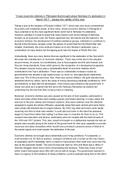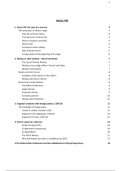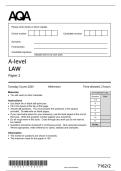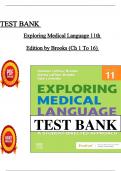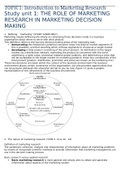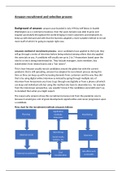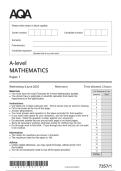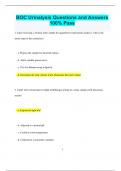“It was economic distress in Petrograd that brought about Nicholas II’s abdication in
March 1917” - Assess the validity of this view
Taking a look at the situation of Russia in March 1917, which was very much overwhelmed
by poverty and misplaced power, at face value, shows economic distress in Petrograd to
have potential to be the most significant factor which led to Nicholas II’s abdication.
However, perhaps it is best to argue that many factors such as the failings of Nicholas,
himself, as an autocratic ruler, the Russo-Japenese war, the tsarina and the tsarevich, the
economic distress, the development of political resistance groups, intertwine to contribute to
the fall of the Romanov dynasty under the sphere of unrest that the First World War had
created. Essentially, the more profound reason as to why Nicolas II abdicated, was a
combination of many factors but the tipping point was the impact of World War One.
Undoubtedly, there are many factors that are significant to the abdication of the Tsar which
fall under the umbrella term of ‘economic distress’. There was unrest due to the situation
around money, of course, but nonetheless, due to food supplies and the lack thereof, and
the poor living standards; those which grew by the recognition of a developing bourgeoisie.
The situation around money was a considerable factor of economic distress which
contributed to the Tsar’s abdication. There was an undesirable increase in taxes as
governments had refused to pay higher prices, so much so, that agricultural implements
were only 15% of the pre-war level. Also, there was severe inflation; the gold standard was
abolished which by nature, led to the value of money becoming practically worthless by 1917
and therefore, to deal with the devaluation, more money was printed by the government. It
would not come as a surprise that this led to the February Revolution as citizens felt
undermined by the fact that their currency held no meaning.
Moreover, economic distress was also caused by the lack of food supplies, particularly to
towns and cities where there were endless queues and bread rationing. In many cases this
was due to the poor railway and transport systems; they were nowhere near the standard
equipped to supply the whole of Russia, especially areas that were remote and some trains
were simply left stranded due to engine failures. By 1916, big cities and towns were hardly
receiving one third of what was needed. It could also boil down to the idea that peasants
began to hoard food rather than selling it as there was no incentive for them to do so. This
caused mass starvation and famine, particularly when its coupled with the bad harvests of
the 1916 and 1917 winters. This, also, would’ve brought on a dislikeness towards the tsar as
people were actually dying at the hands of the government for their poor capability to provide
resources and daily necessities which would have provoked a personal sense of distrust in
the tsarist regime and could explain the abdication of the tsar.
Economic distress too brought about ashamedly poor living conditions. For peasants, a
small wooden hut; for factory workers, cramped conditions and a curtain as the only means
of separation which indubitably, led to a need for improvement that could only come from the
tsar as the autocratic leader. The cost of living had risen by 30% and there was a reflux of
German refugees which led to more overcrowding and tensions. There was a lack of fuel
which meant that people were often left cold as well as hungry. The government seemed to
have no urgency to find solutions to these problems; a prime example being that on the 22nd
March 1917” - Assess the validity of this view
Taking a look at the situation of Russia in March 1917, which was very much overwhelmed
by poverty and misplaced power, at face value, shows economic distress in Petrograd to
have potential to be the most significant factor which led to Nicholas II’s abdication.
However, perhaps it is best to argue that many factors such as the failings of Nicholas,
himself, as an autocratic ruler, the Russo-Japenese war, the tsarina and the tsarevich, the
economic distress, the development of political resistance groups, intertwine to contribute to
the fall of the Romanov dynasty under the sphere of unrest that the First World War had
created. Essentially, the more profound reason as to why Nicolas II abdicated, was a
combination of many factors but the tipping point was the impact of World War One.
Undoubtedly, there are many factors that are significant to the abdication of the Tsar which
fall under the umbrella term of ‘economic distress’. There was unrest due to the situation
around money, of course, but nonetheless, due to food supplies and the lack thereof, and
the poor living standards; those which grew by the recognition of a developing bourgeoisie.
The situation around money was a considerable factor of economic distress which
contributed to the Tsar’s abdication. There was an undesirable increase in taxes as
governments had refused to pay higher prices, so much so, that agricultural implements
were only 15% of the pre-war level. Also, there was severe inflation; the gold standard was
abolished which by nature, led to the value of money becoming practically worthless by 1917
and therefore, to deal with the devaluation, more money was printed by the government. It
would not come as a surprise that this led to the February Revolution as citizens felt
undermined by the fact that their currency held no meaning.
Moreover, economic distress was also caused by the lack of food supplies, particularly to
towns and cities where there were endless queues and bread rationing. In many cases this
was due to the poor railway and transport systems; they were nowhere near the standard
equipped to supply the whole of Russia, especially areas that were remote and some trains
were simply left stranded due to engine failures. By 1916, big cities and towns were hardly
receiving one third of what was needed. It could also boil down to the idea that peasants
began to hoard food rather than selling it as there was no incentive for them to do so. This
caused mass starvation and famine, particularly when its coupled with the bad harvests of
the 1916 and 1917 winters. This, also, would’ve brought on a dislikeness towards the tsar as
people were actually dying at the hands of the government for their poor capability to provide
resources and daily necessities which would have provoked a personal sense of distrust in
the tsarist regime and could explain the abdication of the tsar.
Economic distress too brought about ashamedly poor living conditions. For peasants, a
small wooden hut; for factory workers, cramped conditions and a curtain as the only means
of separation which indubitably, led to a need for improvement that could only come from the
tsar as the autocratic leader. The cost of living had risen by 30% and there was a reflux of
German refugees which led to more overcrowding and tensions. There was a lack of fuel
which meant that people were often left cold as well as hungry. The government seemed to
have no urgency to find solutions to these problems; a prime example being that on the 22nd


